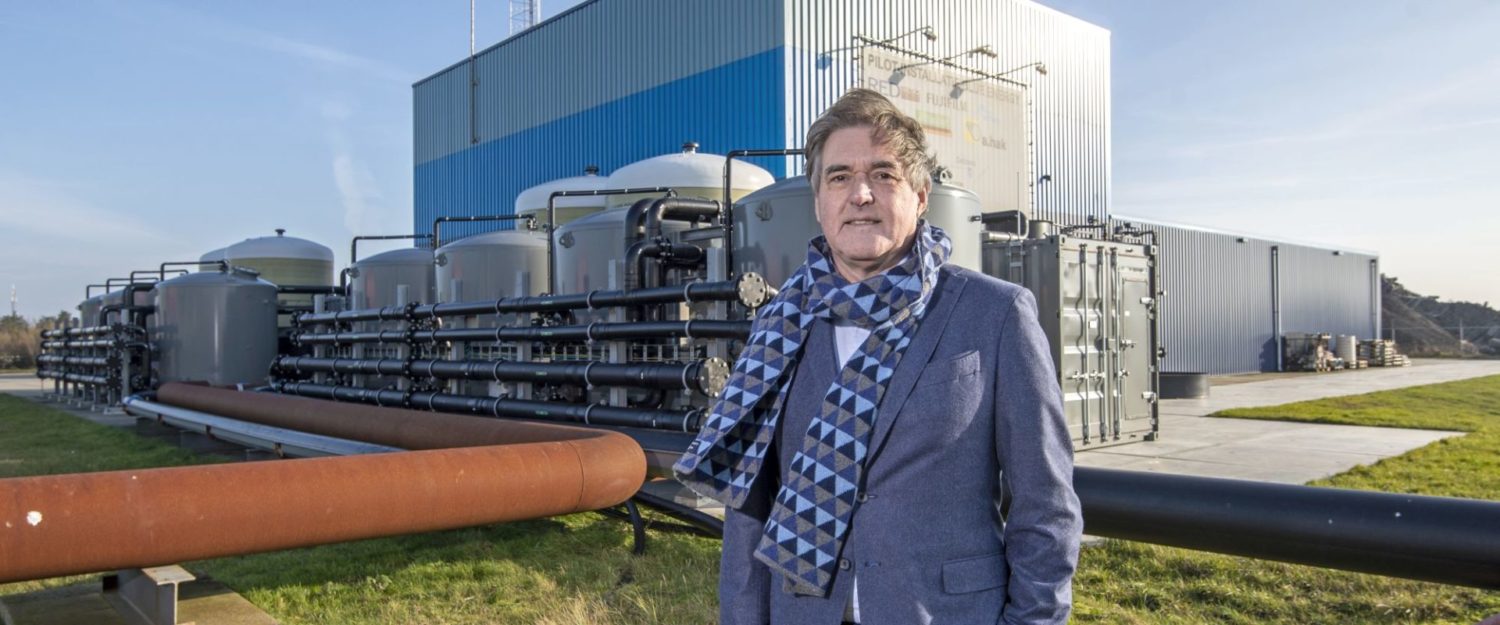Membrane stack
But this RED technology, how does it work concretely? 'With this technology, we make use of a characteristic of nature that aims to nullify differences in concentration,' Rik begins his explanation. 'For example, if you open your door on a cold day, the heat goes outside. The temperature difference is then equalized. When you bring salt and fresh water together, the same principle applies. Salt water contains positively and negatively suffered particles. In fresh water, these particles are also present, but at lower concentrations. When the particles can move between two streams of water, they move from the high to the low concentrations, that is, from salt water to fresh water. To influence this natural process, we conduct the salt Wadden Sea water and the fresh water from the IJsselmeer along a stack of very thin membranes, called membranes. This creates a voltage difference that is converted into energy. Such a membrane stack is called a RED stack, from which we took the name of the company.'

